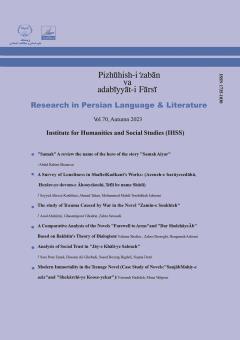Bouran became as the ruler of Sassanid Empire just before downfall of the empire and she was praised in Shahnameh; however, at the beginning of Bouran’s reign, Ferdowsi quotes: “there was a girl named Bouran/ things do not go well, when a woman becomes king”. This verse
More
Bouran became as the ruler of Sassanid Empire just before downfall of the empire and she was praised in Shahnameh; however, at the beginning of Bouran’s reign, Ferdowsi quotes: “there was a girl named Bouran/ things do not go well, when a woman becomes king”. This verse has an obvious contradiction with next verses and and according to this verse, it seems that the decay of empire at that time was a result of her reign. In order to answer to the question of "which of the two contradictions is true" and "what could be the cause of the mentioned contradiction", the article author has compared the Shahnameh's claim about Bouran's statecraft with historical sources. Research data show that there’s no report of inefficiency in Bouran’s governance, and all historians, in more detail than Ferdowsi, have reported her governing as good. So, why did Ferdowsi compose such a poem? The author, by proposing related hypotheses, concludes that this verse is not related to how Bouran governs, but it has been due to Ferdowsi's commitment to the presuppositions that were formed in related to the religious beliefs in his time. Tracing the presuppositions leads us to a hadith of the Prophet (PBUH): "A nation that leaves its affairs to a woman will never be successful.” The hadith documents do not confirm its validity, and its not even mentioned about in early Shiite sources; But its socio-cultural shadow has led to the presumption that if a woman becomes monarch, the country will be ruined. So, the poet has remained in contradiction between those historical facts and this social presupposition, and the result has been a contradiction in composing the story of Bouran. However, the Shahnameh as a whole, does not confirm the society negative view to the women.
Manuscript profile


